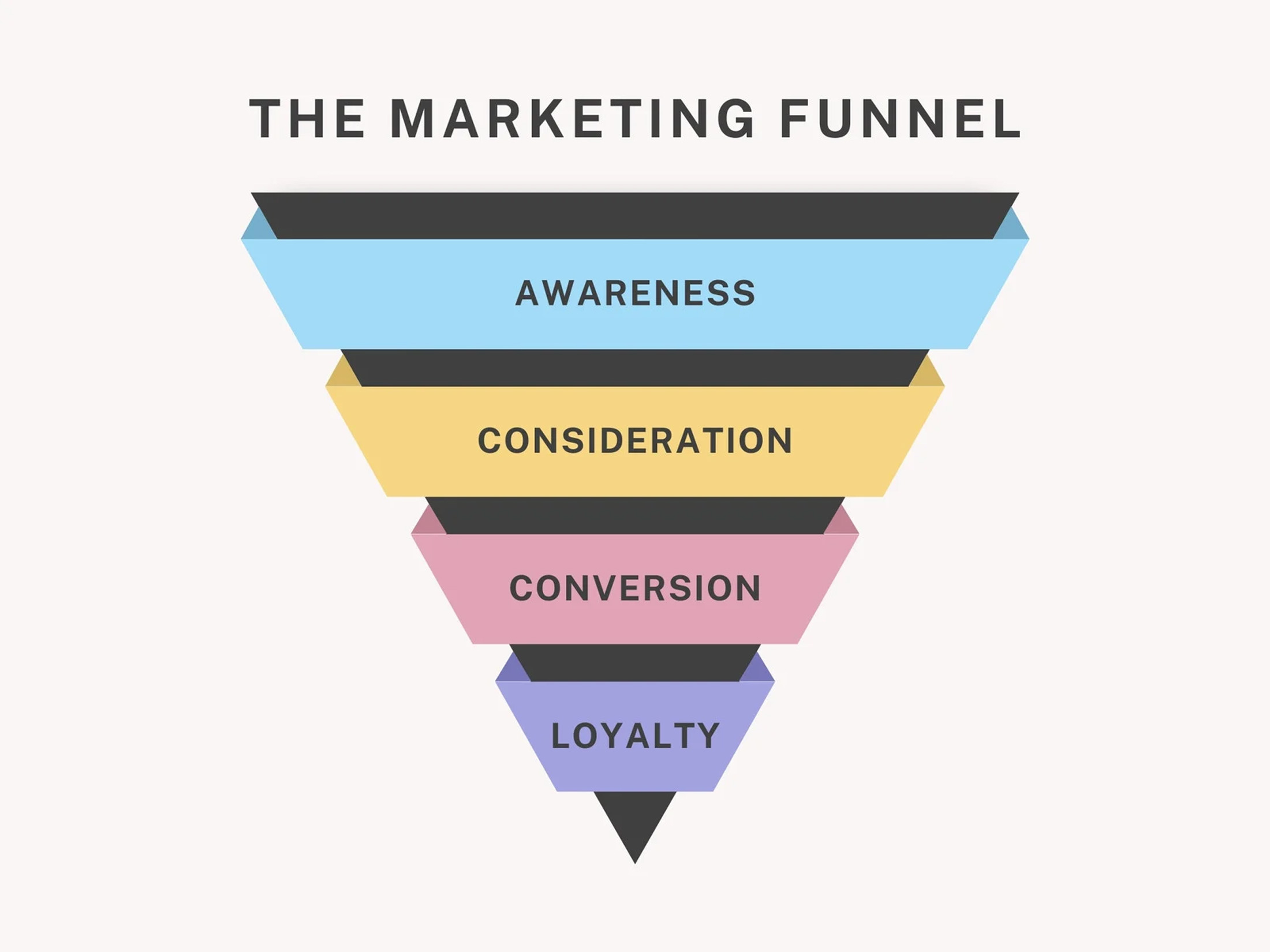A Brief Summary Of The Digital Marketing Funnel
When it comes to measuring the journey a customer makes when purchasing a product, the marketing funnel may very well be one of the most essential tools a marketer can use to measure every step a customer makes. It can eventually make a potential customer go from someone who is ignorant of a product to someone who is a very loyal customer. The marketing funnel was created in the 20th century by advertising advocate E. St. Elmo Lewis in 1898 a man whose contribution to marketing led him to be inducted into the Advertising Hall of Fame. According to Amazon ads it “outlines the most straightforward journey customers might take in their path to purchase”. There are 4 core steps of the marketing funnel, into which customers must enter to reach the desired outcome of becoming an “active customer”. The main four steps in the marketing funnel that I will be discussing here are the Awareness stage, Consideration stage, the Conversation stage, and finally the Loyalty stage.
Awareness: This is the moment when a customer becomes aware of a product or service that they haven’t before. There are many ways in which a customer could become aware of a product such as through digital ads, social media campaigns, or even word of mouth. This doesn’t mean that at this stage a customer would purchase a product right away rather at this stage we are only trying to get a customer aware of the product, specifically to the target audience. In this stage, it’s important to figure out the best way to reach your target audience so that they are aware of your product and have a positive opinion of it. A way to measure this is by seeing the click-through rate (CTR) or the measurement of how many people clicked on the ad in comparison to how many people had seen it. This measures if your advertisements are working to create actual awareness for the brand, or if your advertisements are just background noise potential customers are ignoring.
Consideration: The next step in the funnel is consideration. This happens when a customer who is already aware of your product or service is undergoing the process of deciding whether or not they wanna actually go through with purchasing it. According to the official Google Foundations of Digital Marketing and E-commerce course that can be found on Coursera, examples of consideration could be when a customer is “actively browsing the website or comparing different brands” Another example could include reading reviews of your product. The potential customer already knows about the company’s product, but at this stage, they aren’t fully set on whether or not they should purchase yet. The brand has the customer’s attention, now it’s up to the brand to convince the customer to buy in. A way a company can do this as outlined through the company Salsify is through “detailed product descriptions and engaging content”. A brand could for instance put blog posts on their website or send out newsletters to leads about their product. An easy way to measure consideration could be by measuring how many people are signing up for your newsletter or measuring how long a person stays on your website for.
Conversation: If the customer has officially decided to go with the product they were considering in the consideration stage, then that company has officially moved on to the conversation stage. The conversation stage is as the name implies when a potential customer officially converts to a paying one. There are several tactics companies use to help lead customers to ultimately convert. For instance, companies should invest time in product pages that thoroughly explain what a product does. They can also explain why it’s better than or more unique than its competition. Conversation can be measured simply by seeing how many people made a purchase.
Loyalty: Our final stage in the marketing funnel is known as the loyalty stage, which is when the customer returns for multiple purchases. The opinion of the company’s brand here has to be very positive in the customer’s eye. There are many ways to get a customer to become a loyal one. For instance, a brand should focus on following up with a customer after a purchase. advertising.amazon.com explains that “it costs a brand five times more to acquire a new customer than retain an existing one” A follow-up email for instance made a few months after purchase that includes a coupon for a similar product a buyer may like goes a long way to create loyalty in that customer. Factors such as good communication, and fast shipping after the purchase also can go a long way to create returning customers. A company can measure loyalty by the rate at which people repeat transactions.
Overall, the marketing funnel can be an invaluable tool for helping companies see and measure every step a customer takes during the purchasing process. With the marketing funnel, companies can make effective changes to make their brand and product stand out throughout the entire purchasing journey.
Work Cited
11 key metrics & methods to measure brand awareness | localiq. (n.d.-a). https://localiq.com/blog/how-to-measure-brand-awareness/
How digital marketing and e-commerce benefit organizations. (n.d.). Google Digital Marketing & E-commerce Professional Certificate.
Salsify, I. (n.d.). Consideration stage. Unified Product Experience Management. https://www.salsify.com/glossary/consideration-stage-meaning
What is a marketing funnel? how they work, stages & examples | amazon ads. (n.d.-b). https://advertising.amazon.com/library/guides/marketing-funnel
